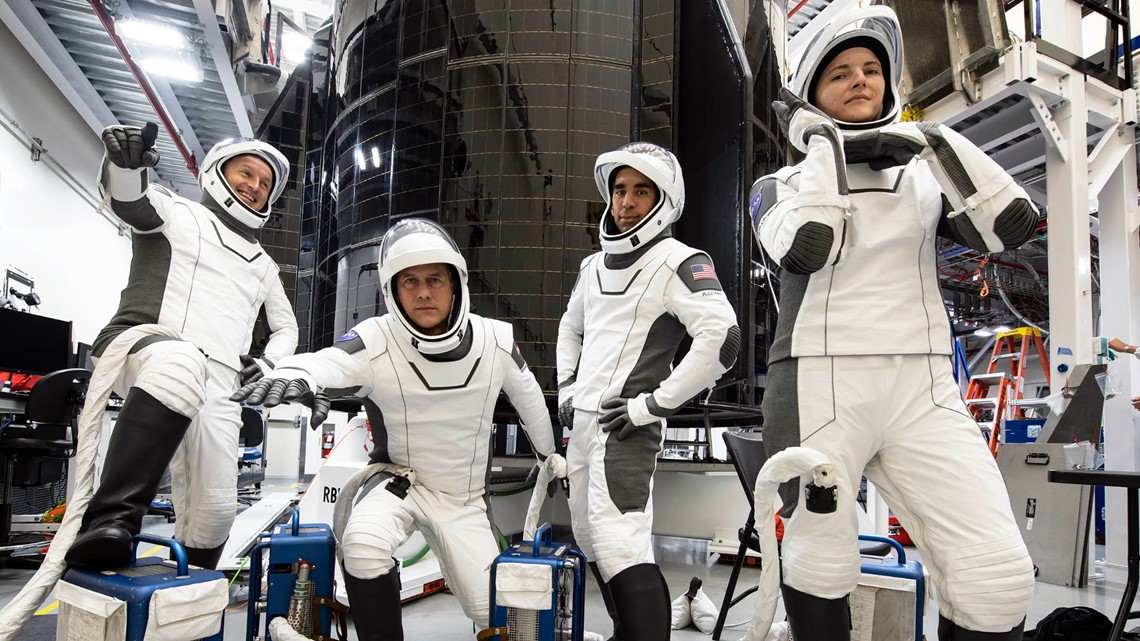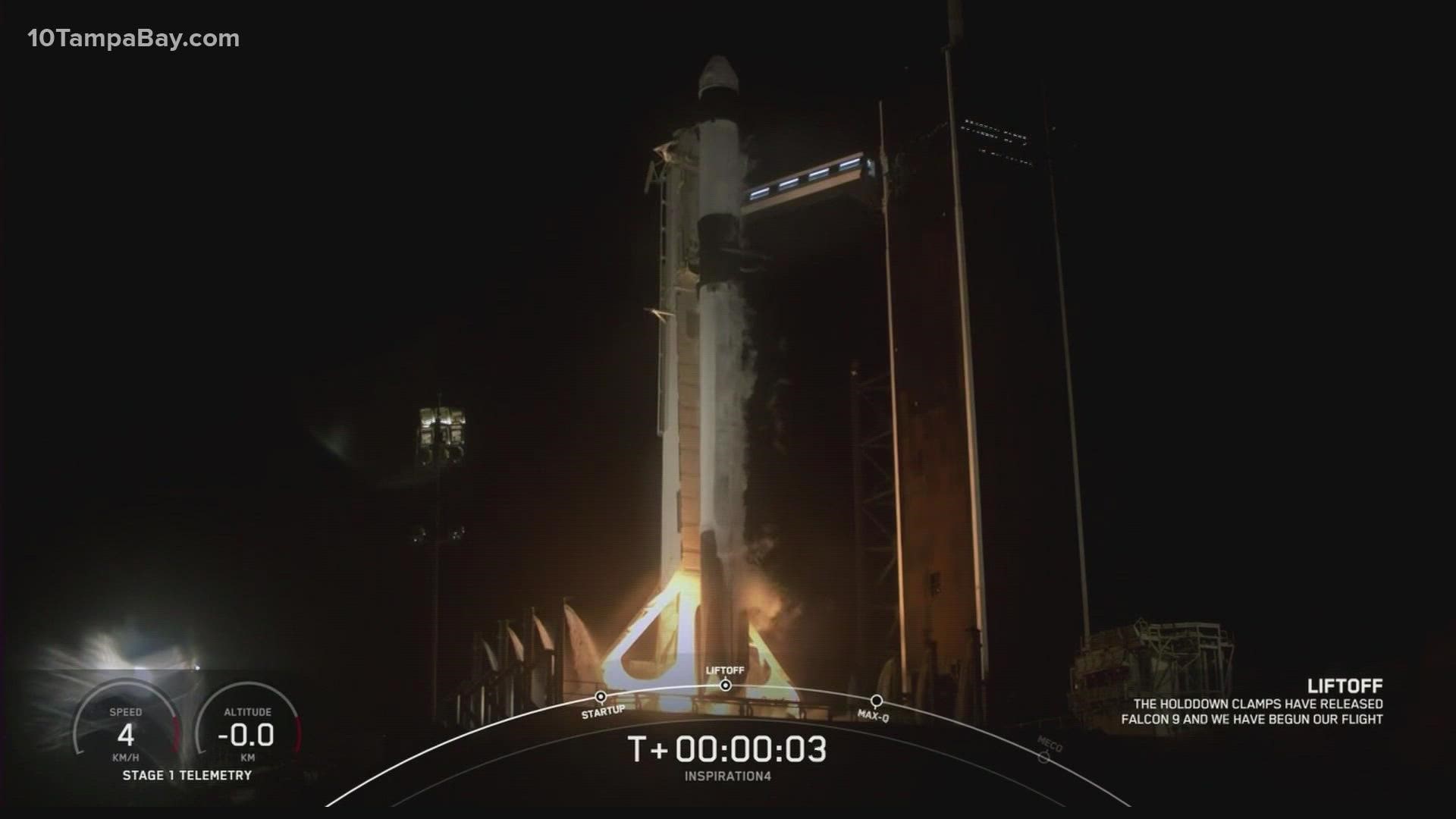CAPE CANAVERAL, Fla. — After being scheduled for a spooky Halloween liftoff, Crew-3 has now been forced to stand down from its targeted launch day for the fourth time.
Weather and a "minor medical issue" were behind the first three delays, with the need to bring Crew-2 home being the cause for the latest delay.
“These are dynamic and complex decisions that change day by day,” NASA’s Commercial Crew Program Manager Steve Stich said. “The weather in November can be especially challenging, so our goal is to move forward on the plan with the highest probability of mission assurance and crew safety.”
The four-person crew is now aiming to launch to the International Space Station for a six-month science expedition at 9:03 p.m. ET on Nov. 10. Teams say weather conditions are looking 70-percent favorable for launch.
The mission will give the nation's top space agency the opportunity to "restore and maintain" American leadership in human spaceflight, while also continuing needed research at the orbiting laboratory.
"Such research benefits people on Earth and lays the groundwork for future exploration of the Moon and Mars starting with the agency’s Artemis missions, which includes land[ing] the first woman and person of color on the lunar surface," NASA wrote in a press release.
Crew-3 will also continue the agency's push to continue to launch astronauts from American soil and on American rockets.
Here's what you need to know ahead of liftoff:
What time is launch?
Crew-3 is targeting a 9:03 p.m. ET launch from NASA's Kennedy Space Center's Launch Complex 39A on Nov. 10.
The Crew Dragon Endurance and its four-person crew will launch atop a Falcon 9 rocket before heading to the International Space Station. Docking is estimated to occur nearly 24 hours later at 7:10 p.m. on Nov. 11.
Since the mission's astronauts arrived in Florida on Oct. 26, they've completed a full dress rehearsal and had a successful static fire test of their rocket.
How can I watch the launch?
If you want to catch all the action, you'll have to tune in online or scope out a spot of your own.
Given that the launch is happening at night, and outside of visitor complex operating hours, the Kennedy Space Center only had its "Feel the Fun" viewing package available. It has since sold out.
NASA will also be providing a live feed of the mission which can be found on its website or Youtube page at 4:45 p.m. ET on Nov. 10.


Who is on the crew?
The Crew-3 flight will carry three NASA astronauts and one European Space Agency (ESA) astronaut into space.
Among the crew for NASA is Raja Chari who will serve as the mission commander, Tom Marshburn who will serve as the mission pilot and Kayla Barron who will serve as a mission specialist. Representing the ESA will be Matthias Maurer who will also serve as a mission specialist.
Barron was a late addition to the crew, which was formed in December 2020. She was added in May 2021 and will be experiencing her first spaceflight.
How will the mission work?
The third crew rotation mission with astronauts for the Commercial Crew Program will be heading beyond Earth's atmosphere to conduct a six-month expedition.
During their long-duration stay, the crew will conduct science research and do maintenance to enhance the orbiting laboratory's power supply before heading home in spring 2022.
Among the research projects set to be completed are, materials science, health technologies and plant science that will "prepare for human exploration beyond low-Earth orbit and benefit life on Earth."
According to NASA, Crew-3 will also spend time in the microgravity laboratory, see cargo spacecraft arrive and welcome two private crews to the ISS.
What to know about the spacecraft?
The Crew Dragon being used for the mission is called Endurance which got its name from Crew-3 as part of a tradition. According to NASA, the spacecraft is brand new and will be the first to fly a previously used nosecone.
"Crew-3 chose Endurance as a tribute to the tenacity of the human spirit for exploration to push farther than we ever have with commercial opportunities in low-Earth orbit and preparations for missions to the Moon and Mars," NASA wrote.
The name is also reported to be a nod to the team's work during the pandemic and what is required from astronauts who are slated to fly long-duration missions.

